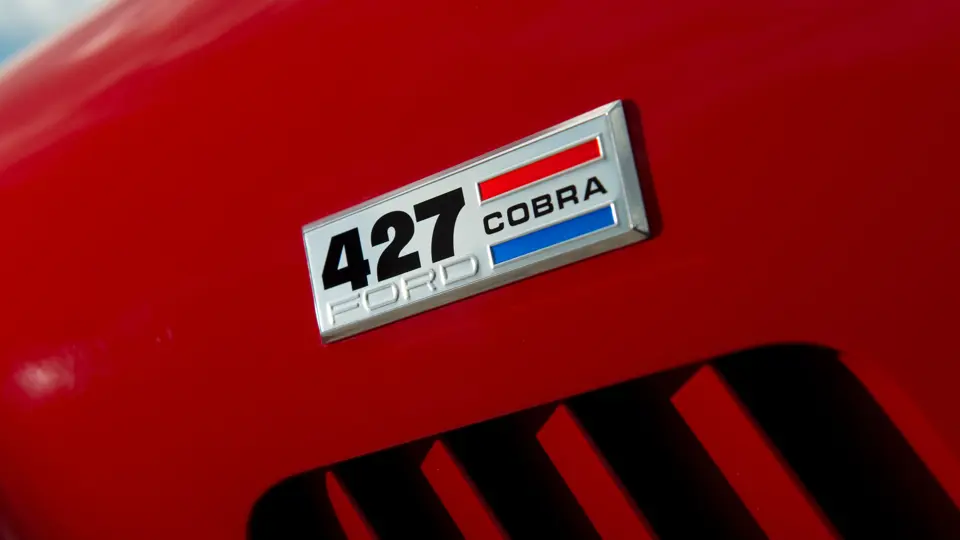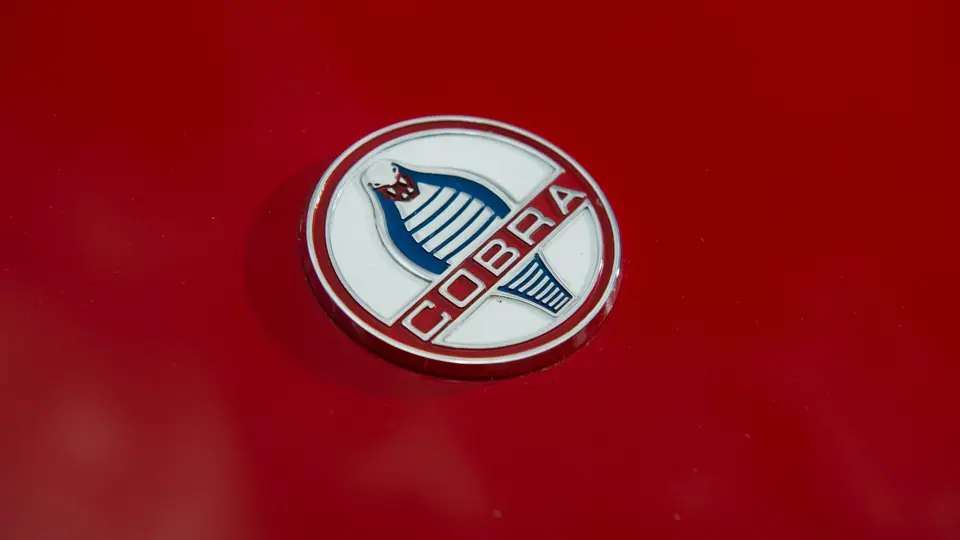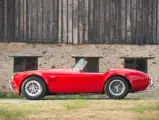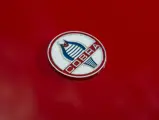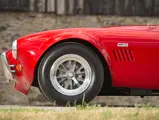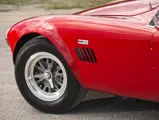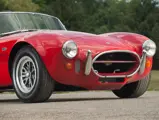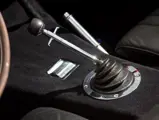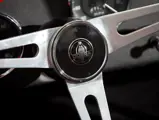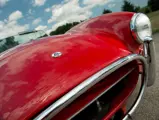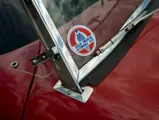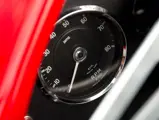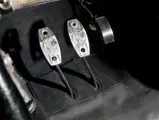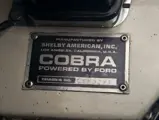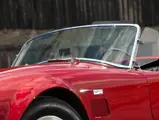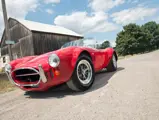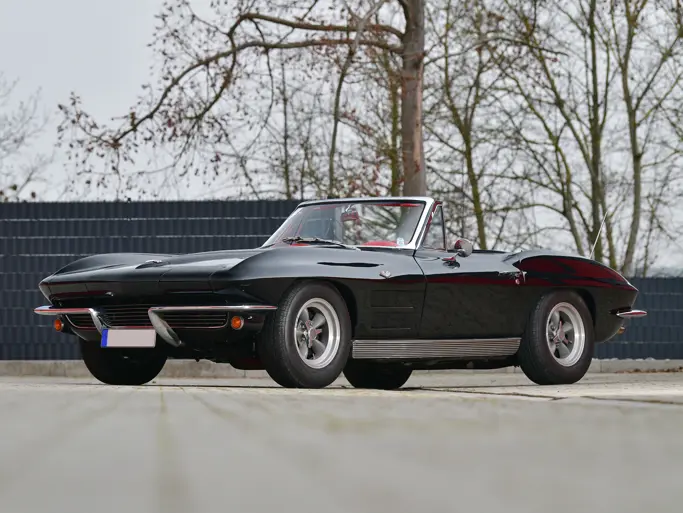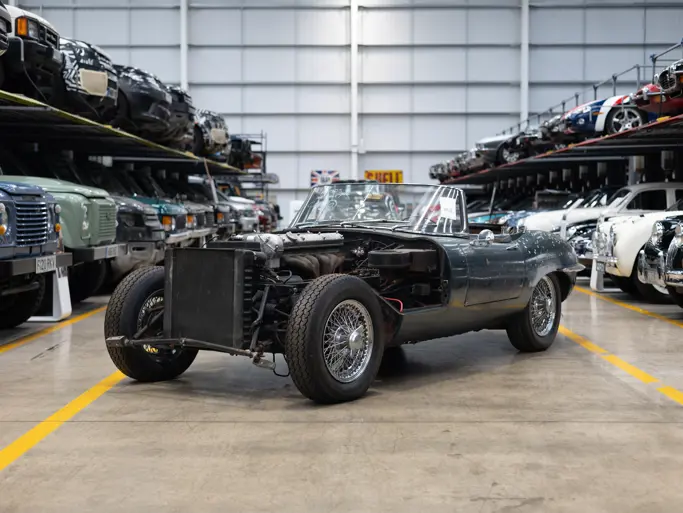427 cu in Ford V-8 engine with dual four-barrel carburetors, four-speed manual transmission, four-wheel coil spring independent suspension, and four-wheel hydraulic disc brakes. Wheelbase: 90"
• A genuine, no stories example with 21,000 miles reported from new
• Owned in period by noted collector and racing enthusiast Bruce Canepa
• Recent cosmetic restoration by marque specialists
The thundering Shelby Cobra is unquestionably one of the most important American performance icons of the 20th century. Rooted in the brilliant racing career and boundless grit of its creator, Carroll Shelby, the Cobra singlehandedly vaulted Ford Motor Company’s “Total Performance” corporate racing program onto the international stage and marked a crucial step in Ford’s eventual dominance over archrival Ferrari at Le Mans during the 1960s.
With Shelby’s leadership, the era’s top drivers and a “dream team,” including Ken Miles, Phil Remington, Pete Brock, and many other racing luminaries in the background, the Ford-powered, AC Ace-derived Cobra was brutally quick and dead reliable, quickly earning its stripes and winning virtually everywhere it appeared. The Cobra won the U.S. Manufacturer’s Championship three years running, in 1963, 1964, and 1965, and with sleek Pete Brock-designed Daytona coupe bodywork, Shelby American Inc. won the hotly contested 1965 FIA World Manufacturer’s Championship.
Although the 289 Cobra was proven and immensely successful, more power was needed to stay competitive. Since Ford’s 289 V-8 reached its reliability limit at 385 hp, Shelby’s stalwart driver and engineer Ken Miles surmised that an even bigger engine might work within the trim confines of the Cobra. If there was any doubt about the need, it evaporated when the Shelby team went to Nassau for the 1963 Speed Week, where Chevrolet’s new Corvette Grand Sports were lapping more than nine seconds quicker than the small-block Cobras!
However, while Shelby was initially promised a new aluminum-block version of Ford’s 390 FE engine, internal resistance from the NASCAR faction within Ford forced a switch to the heavier cast-iron 427. Although powerful, proven, and reliable at 500 bhp and beyond, it was heavier and, therefore, necessitated a complete redesign of the Cobra’s chassis to ensure proper handling. The new chassis measured five inches wider, with coil springs all around, and with development help from Ford’s engineering department, the 427 Cobra was born.
The cars were brutally fast. Driving one continues to be a mind-bending experience. One of the most memorable stories about the 427 Cobra involves a test arranged for Sports Car Graphic magazine by Shelby’s Ken Miles. A few years earlier, Aston Martin claimed that their DB4 was capable of accelerating from zero to 100 mph and back down to zero in less than 30 seconds. Miles had the idea to restage the test using the new 427 Cobra. The result, according to SCG editor Jerry Titus, was an astounding 13.2 seconds!
Shelby’s big-block cars were never mass-produced, with just over 300 built, including 260 street cars, 23 full-competition cars, and 27 S/C (semi-competition) Cobras. In all forms, the 427 Cobra was a mighty racing car and virtually unbeatable on the road.
The example offered here was billed to Shelby American on July 18, 1966 and subsequently invoiced to Hayward Ford in Hayward, California a short time later. CSX 3293 was delivered new in red with black interior with a 428, as all 3200 series cars were. The original owner is believed to have been a Mr. Bob Schiro, of Santa Clara, California, who kept the car until 1968, and it remained in the same area until that point. At that point, Bruce Canepa, the noted racing enthusiast and car collector, acquired the car and kept it for the next several years, regularly enjoying the Cobra as his own. During Canepa’s ownership, he had a 427 CID engine rebuilt and installed.
By 1988, the Cobra was in the ownership of Mr. Steve Burnett, of Newport Beach, California. Burnett commissioned a local firm to perform some freshening on the car after its many years of use and enjoyment, and about two years later, the car was offered for sale with only 17,560 miles showing on the odometer.
At that point, it caught the eye of a German collector who subsequently added it to his collection, and after 34 years in the state of California, the Cobra was headed overseas. Once in Germany, it remained with the importer Mr. Hans Weber for two years before it was sold to Hendrik Hoffmann in May of 1995. A short five months later, Mr. Hoffmann had the car on the cover of noted international automotive publication Motor Klassik, the first of two times this honor was bestowed on the car! In 2007, Andre Ahrle from Monaco purchased 3293 and enjoyed driving the thundering Cobra through the streets of the tiny principality, certainly receiving more than his fair share of attention.
Over the years, CSX 3293 is understood to have only been driven 21,000 miles and has always remained extremely well-cared for. Most recently, Mr. Ahrle had the Cobra sent to marque specialists Legendary Motorcar Company, where it underwent a cosmetic restoration to exacting standards. Today, the 427 Cobra is presented with its original bodywork, on the original chassis, and in its correct, as-delivered livery of red on black, complemented by the clean look of a full under-car exhaust. The 427 engine is topped with a dual quad setup and still makes a pulse-pounding noise, which cannot be mistaken for anything but a Cobra. The Halibrand wheels complete the factory original look.
Now in the 50th anniversary of Carroll Shelby’s creation, this particular block Cobra is a fantastic example that we are informed drives even better than it looks. Blindingly fast, it is a milestone in the legendary history of Carroll Shelby and Ford’s “Total Performance” program, presented here in low-mileage, restored, and well-documented form.




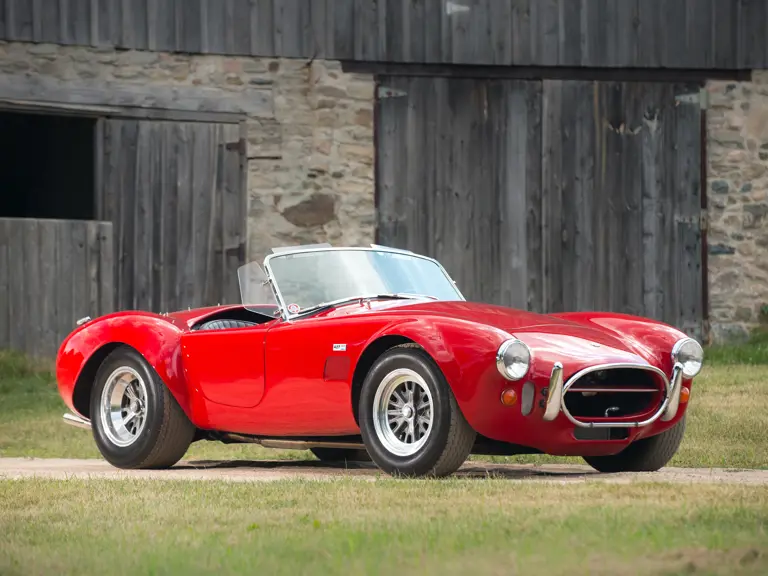
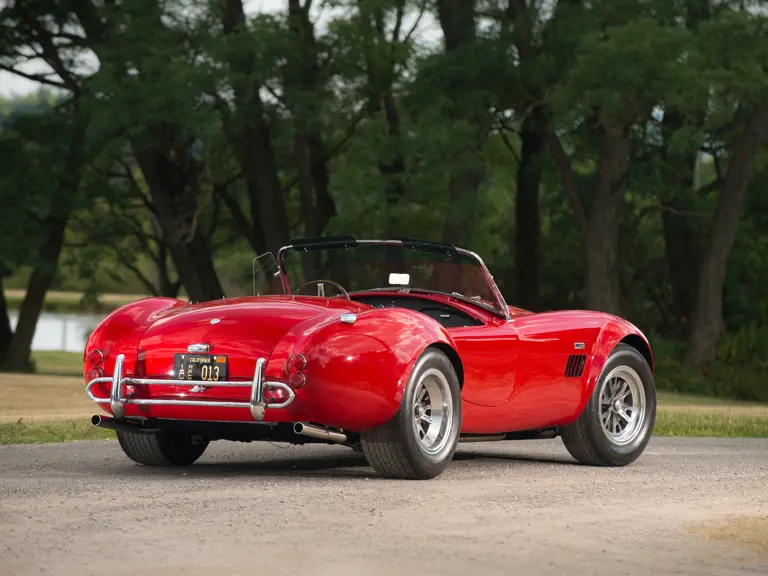


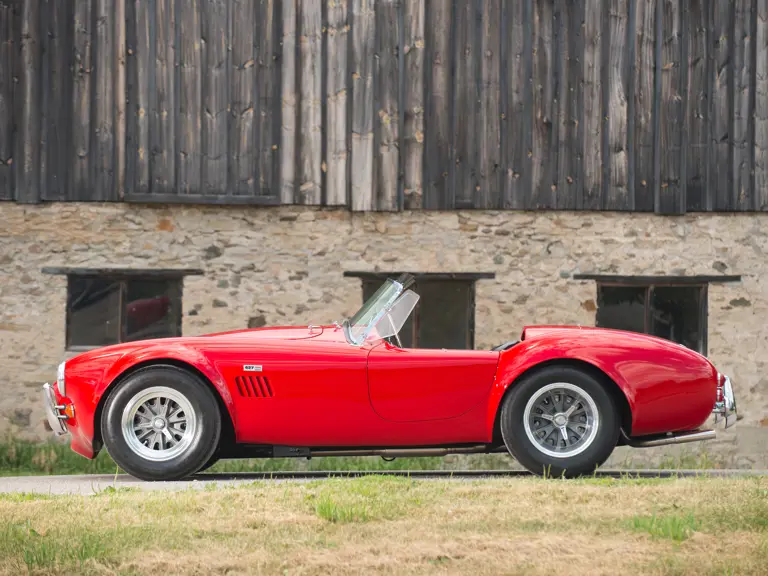


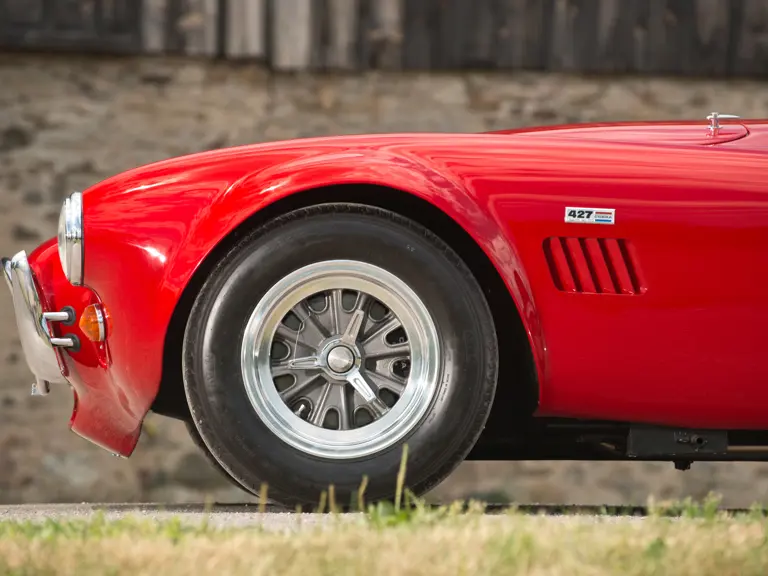
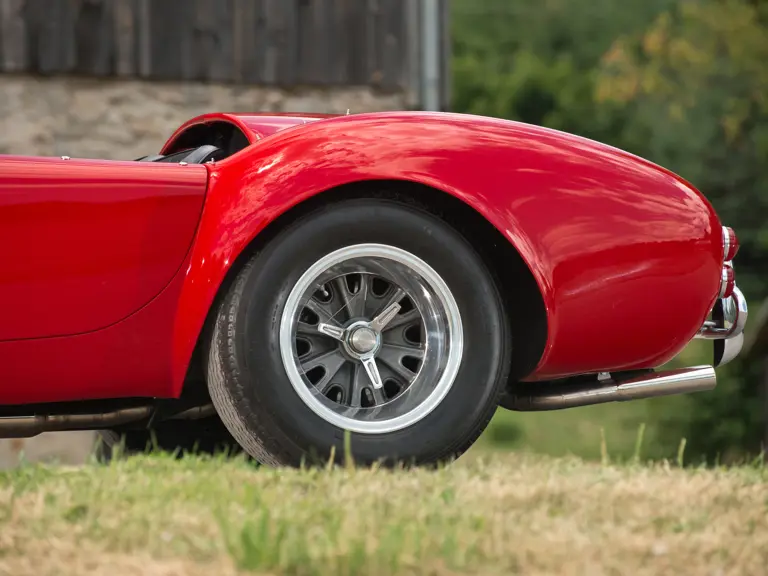
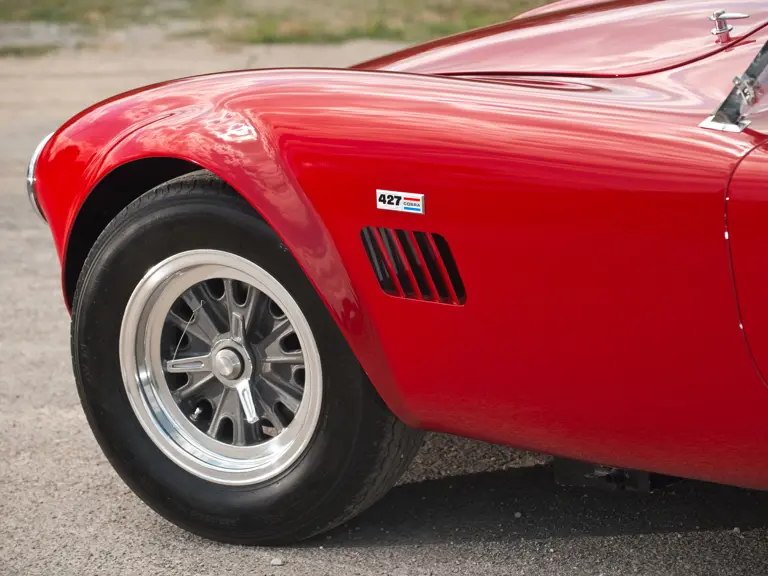
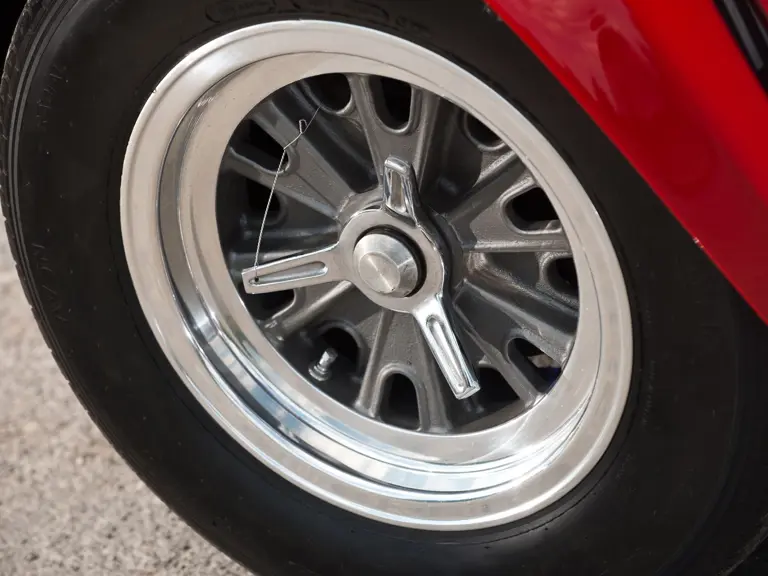
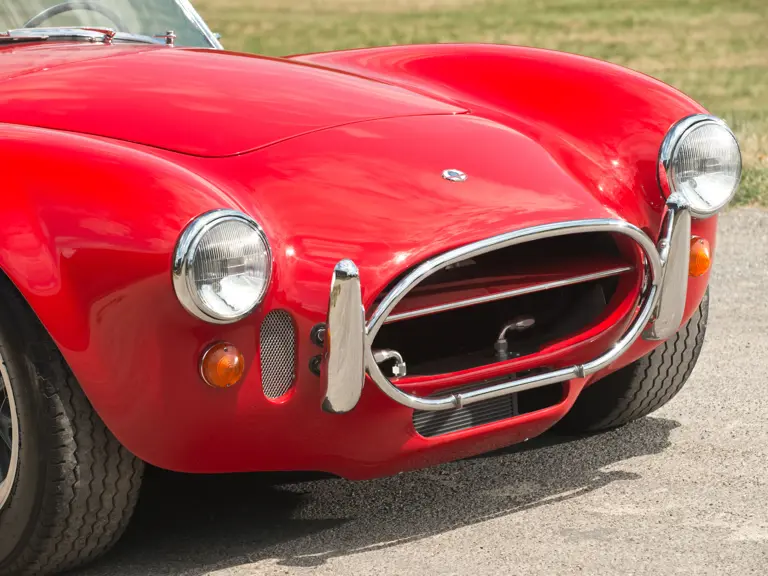


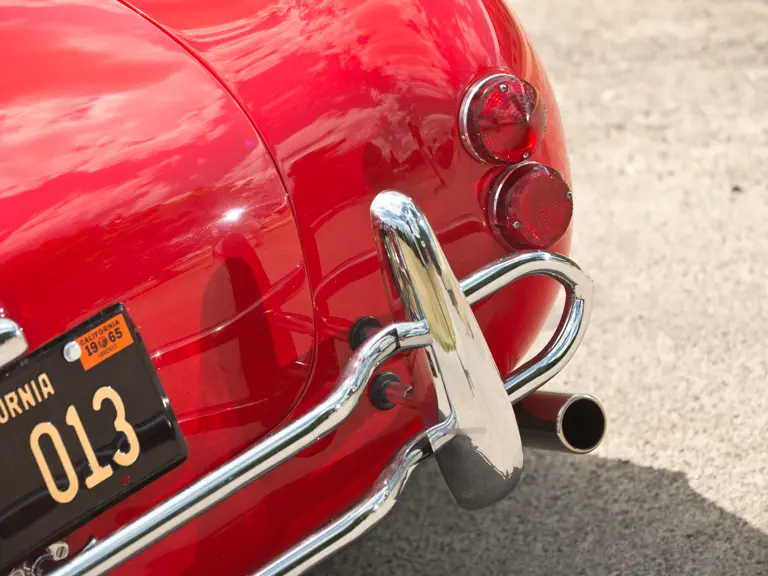


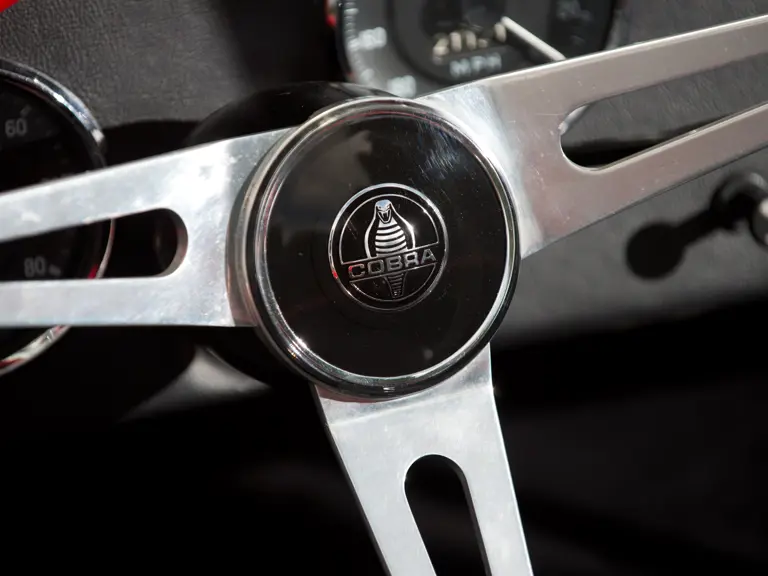
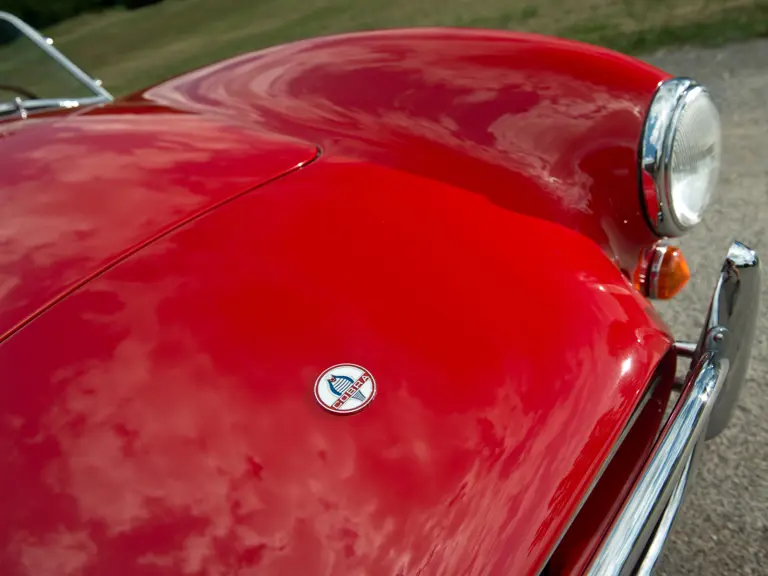
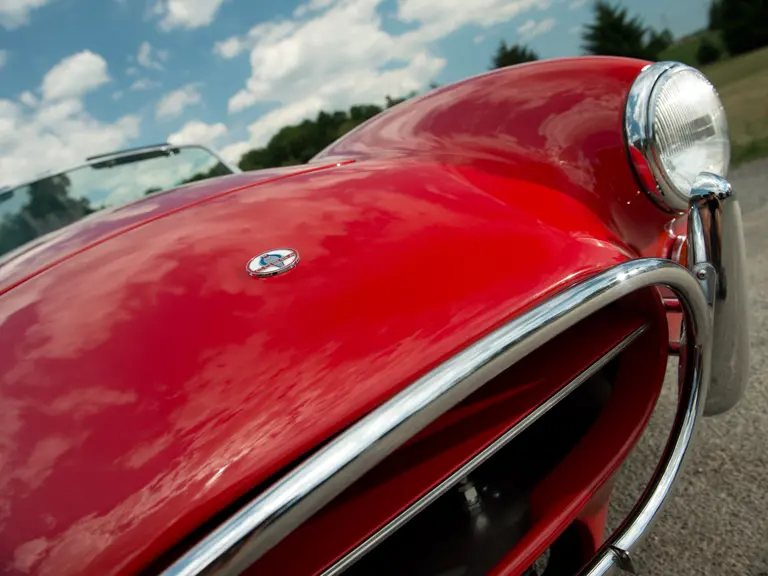

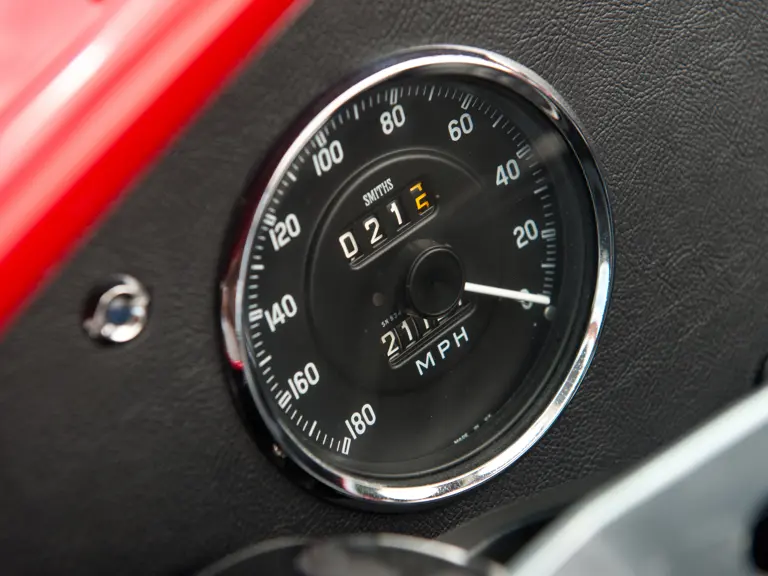
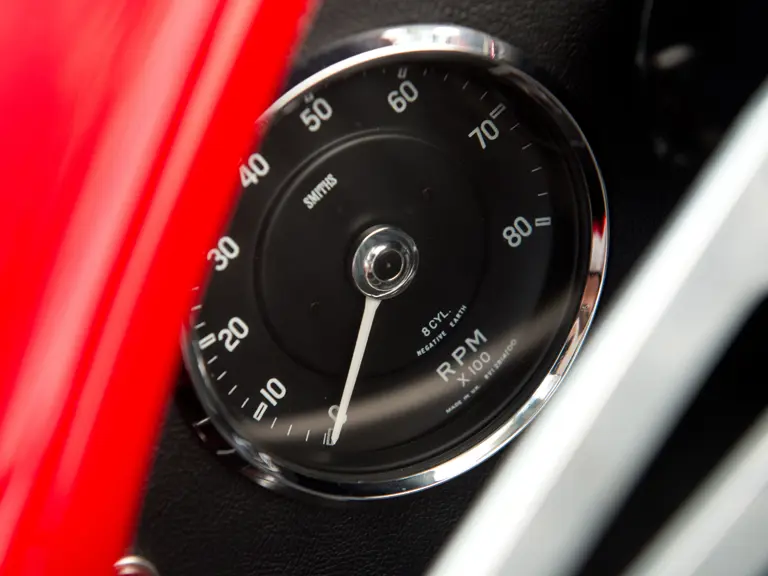


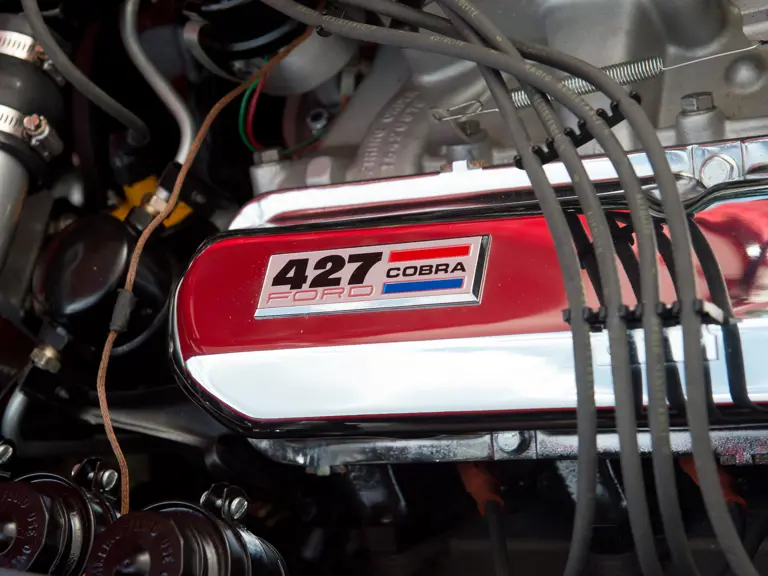
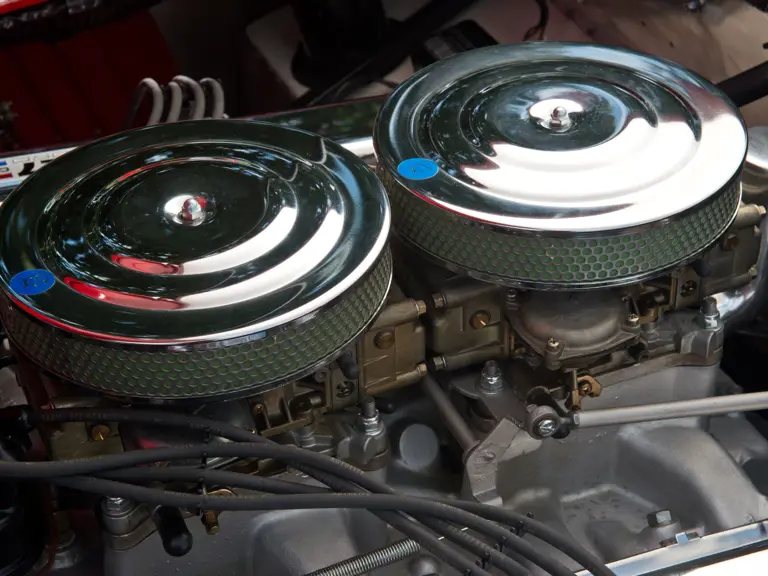
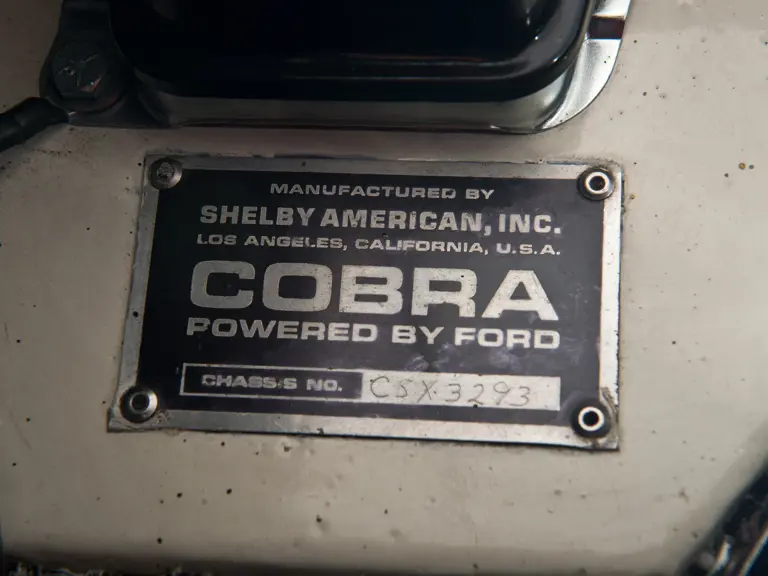

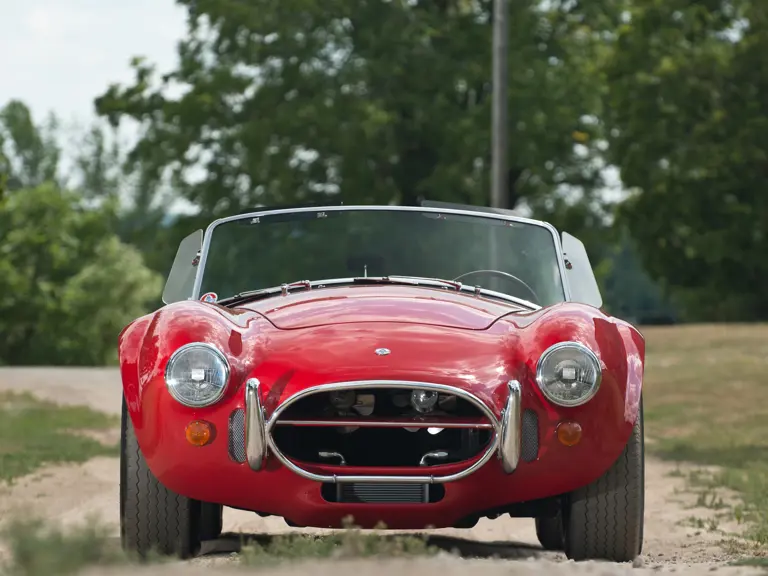

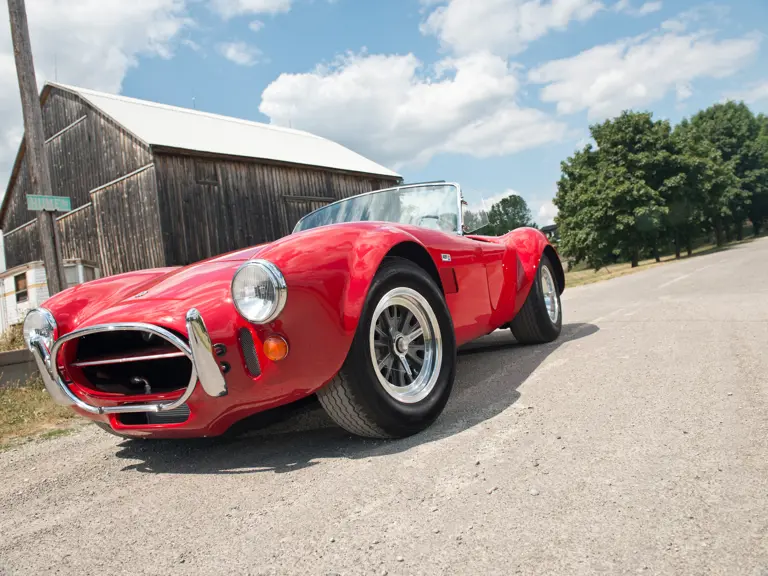



 | Monterey, California
| Monterey, California

